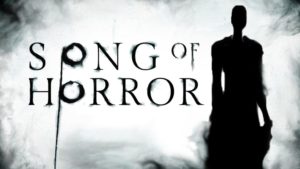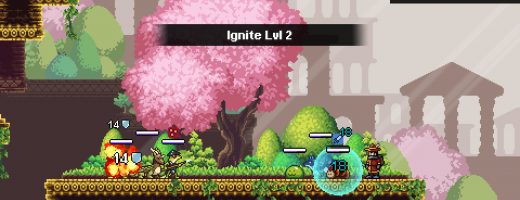Adventure Corner: Song of Horror
Welcome to Adventure Corner, a column where members of the RPGamer staff can give their thoughts, impressions, and pseudo-reviews for various adventure titles that don’t come under our usual coverage. Adventure Corner is aimed at delivering opinions on a wide range of titles including visual novels, point-and-click adventures, investigative mysteries, and so forth.
In this edition of the column we take a look at episodic gothic survival-horror adventure Song of Horror, available on PC via Steam and GOG.com, with console releases planned in the future.
Song of Horror
In a world dominated by slick first-person horror games like Amnesia and Outlast, it’s nice every now and then to remember the time of before, a time punctuated by survival horror buzzwords like “tank controls” and “fixed camera angles”. A time when the progenitors of the genre — Alone in the Dark, Resident Evil, Silent Hill — were still in their nascent days. In many ways, Protocol Games’ Song of Horror is a throwback to that time; not quite as obtuse or unwieldy, with a touch more emphasis on puzzle-solving and less on out-and-out action. It’s not perfect and leaves a mark when it stumbles, but it still manages to scare up a frighteningly good time despite a few setbacks.
The game consists of five episodes, complete with separate intro and finale bookends, originally released months apart beginning in October 2019, with the final episode releasing in May 2020. Each episode is set in a different staple horror location, often with unique characters to play as. However, there is still a through-line that ties all episodes together. Central to the story is Daniel Noyer, who is dragged, along with those unfortunate souls closest to him, into a hellish waking nightmare that sends him all around Europe in a desperate bid to stop the malevolent presence stalking him. It all begins when he is sent by the publishing firm he works for to check on popular author Sebastian Husher, who has not been heard from recently. Arriving at the author’s mansion, Daniel finds it seemingly empty, but stumbles on a curious little music box, which sends him on his descent into madness.
Ultimately, the mystery behind the music box is Daniel’s to unravel, and this serves as the game’s connective tissue from episode to episode. As the central protagonist, Daniel can be selected as the player character at the start of each episode (excepting the first one), though if he succumbs to the dark forces, it’s game over. The cast, made up of 13 playable characters, rotates with each episode, with some making single-episode appearances while a few select others return for encore performances. In this way, each episode features three or four playable characters, and death is permanent; if a character bites the dust in an earlier episode their spot during a later appearance will remain empty. When a character dies, the next one picks up where they left off, even being able to grab their fallen comrade’s inventory bag off the floor in their last-known location; however, should all available characters die during the course of a single episode, the entire episode MUST be restarted, potentially losing hours of progress. Worse, puzzles and item locations are static, so if an episode has to be completely restarted four times, it means repeating the same actions and solving the same puzzles four times as well. While this probably sounded like an interesting idea on paper, it quickly becomes tedious. At least the options menu includes difficulty settings, the easiest of which disables permadeath for those who want to focus exclusively on the story.
Death stalks the cast of characters in various guises, with new ghoulish creatures added to the mix in each episode. Each character has their own stats, visible at the character select screen, that determine factors such as how much brute force they can employ during an encounter or how stealthily they can avoid being detected. Encounters play out in one of several quick-time event formats, generally revolving around mashing specific buttons quickly, matching a rhythm, or holding an on-screen indicator steady. Depending on the currently-selected character, it can be quite easy to fail a QTE, causing the character to die immediately. This, coupled with the dreaded loss of progress due to eventual permadeath, represent Song of Horror at its most frustrating, and they make a strong case for considering the easier difficulties.
On the flip side, the game is at its best when delving into the numerous creepy locales, from a haunted mansion to an abandoned mental hospital and the ruins of a ghostly monastery — each more gothic than the last. The atmosphere is deliciously spine-tingling, and it doesn’t hurt that it is brought to life through some truly gorgeous environments and graphical design (though character models seem to have taken multiple beatings with an ugly stick during close-ups) and a very apt soundtrack of both hair-raising and soothing music to balance each other out.
Song of Horror is an easy recommendation for fans of slow-burn horror, with the caveat that certain gameplay mechanics quickly wear out their welcome. But through use of the provided difficulty settings, it should be possible for everyone to dial in just how much emphasis on survival they want in their survival horror. When judged simply on how successful it is in providing a horror game as rich in atmosphere as it is in enjoyable inventory-based and traditional puzzles, the game effortlessly scores high marks. It has already carved out an audience for itself among horror fans, which will only continue to grow as more victims become willingly ensnared in its web.
Disclosure: This article is based on a free copy of the game provided by the publisher.










Recent Comments